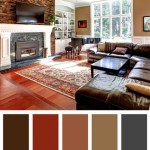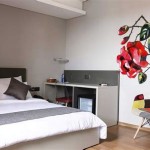How To Decorate A Long, Windowless Living Room
Decorating a long, windowless living room presents unique challenges. The absence of natural light and the elongated shape can make the space feel cramped and uninviting. However, with careful planning and creative design choices, it's possible to transform this challenging area into a cozy and stylish living space.
Embrace Artificial Lighting
The most crucial aspect of decorating a windowless living room is lighting. Relying solely on overhead fixtures can create harsh shadows and a sterile atmosphere. A layered lighting approach is recommended, combining ambient, task, and accent lighting. Ambient lighting provides overall illumination, mimicking natural light. Recessed lighting, strategically placed wall sconces, and uplighting can achieve this. Task lighting, such as floor lamps and table lamps, provides focused light for specific activities like reading or working. Accent lighting highlights artwork, architectural features, or decorative elements, adding depth and visual interest. Incorporating a variety of light sources with varying intensities and color temperatures creates a warm and inviting atmosphere.
Consider using “daylight” LED bulbs to mimic the color temperature of natural light. These bulbs can significantly enhance the perceived brightness of the room and combat the potential for a closed-in feeling. Smart lighting systems can further enhance the ambiance, allowing for adjustable brightness and color temperature throughout the day, simulating the natural shift of daylight.
Create Focal Points to Break Up the Length
The elongated shape of a long living room can make it feel like a hallway. Strategically placed focal points can interrupt the long lines and create distinct zones within the space. A large piece of artwork, a striking fireplace, or a feature wall can serve as an anchor, drawing the eye and breaking up the length visually. Consider using rugs to define different seating areas, further delineating the space and adding warmth and texture. A strategically placed console table or room divider can also help to segment the room and create a sense of intimacy within the larger space.
Avoid placing all furniture against the long walls, as this emphasizes the length of the room. Positioning furniture perpendicular to the walls, creating separate conversation areas, can help visually widen the space. A sectional sofa, arranged in an L-shape or U-shape, can define a comfortable seating area while also breaking up the linearity of the room.
Introduce Reflective Surfaces and Light Colors
Maximizing light reflection is crucial in a windowless room. Light colors on walls and ceilings create a sense of airiness and openness, while reflective surfaces bounce light around the room, amplifying the effect of artificial lighting. Mirrors, metallic finishes on furniture and accessories, and high-gloss paint can all contribute to a brighter, more spacious feel. Consider a large mirror strategically placed to reflect light from a light fixture, effectively doubling its impact.
Incorporating glass or acrylic furniture can also help create a sense of airiness. A glass coffee table or acrylic console table allows light to pass through, preventing the space from feeling heavy or cluttered. Similarly, choosing furniture with lighter legs, rather than heavy bases, can create a sense of visual lightness.
Bring the Outdoors In
The absence of windows can create a disconnect with the natural world. Introducing elements of nature can compensate for this lack of connection and improve the overall well-being of those using the space. Plants, both real and artificial, can add life and vibrancy to the room. Nature-inspired artwork, such as landscapes or botanical prints, can further enhance this connection. Natural materials, such as wood and stone, can also be incorporated through furniture and accessories, adding warmth and texture to the space.
Consider installing a living wall, or a vertical garden, as a striking focal point. This not only adds a touch of nature but also improves air quality. Incorporating a water feature, such as a small indoor fountain, can introduce soothing sounds and contribute to a more relaxing environment.
Use Visual Tricks to Create Depth and Dimension
Trompe l'oeil wallpaper, murals, or large-scale photographic prints can create the illusion of windows or other architectural features, adding depth and interest to a windowless room. Using light-colored flooring and darker walls can create a sense of height, making the ceiling feel higher. Vertical stripes on wallpaper or curtains can also create the illusion of height. Incorporating textured wall coverings, such as grasscloth or textured paint, can add visual interest and dimension without relying on natural light to highlight variations.
Consider using shelving strategically to display artwork and decorative objects. This not only adds visual interest but also draws the eye upwards, creating a sense of height. Avoid cluttering the space with too many small items. Instead, focus on a few carefully chosen statement pieces to create a more impactful and less cluttered aesthetic.

How To Design Rooms Without Windows Blindsgalore Blog

6 Tricks To Make A Dark Room Feel Bright Windowless Ideas

How To Decorate A Room Without Windows Arts And Classy

11 Ways To Work With A Windowless Room

How To Decorate A Room With No Windows Make It Seem Less Confining Quora

How To Design Rooms Without Windows Blindsgalore Blog

6 Tricks To Make A Dark Room Feel Bright Windowless Ideas

How To Design Rooms Without Windows Blindsgalore Blog

How To Design Lighting In A Room Without Windows

How To Brighten A Dark Room Even If It Has No Windows From House Home







